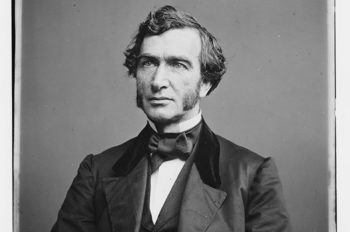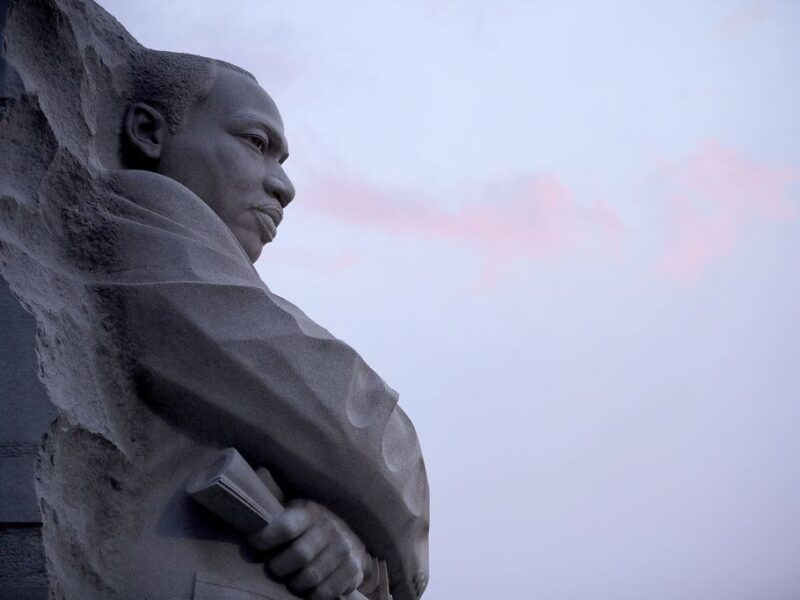The Morrill Act Still Has A Huge Impact On The U.S. And The World

July 2 is a key date in the history of Texas A&M University.
It was then that the Morrill Act went into effect in 1862, named for its sponsor, Vermont Congressman Justin Smith Morrill. It allowed each state to sell up to 30,000 acres of land and use the funds to establish colleges, hence the name “land grant” universities.
In Texas, two colleges were established – Texas A&M University and Prairie View University, but Texas A&M did not hold its first classes until 1876.
Recent scholars have pointed to the contributions of Matthew Gaines, the first African-American state senator and Baptist minister from Washington County, who was instrumental in the 12th Texas Legislature’s passage of Senate Bill 276. It helped create the Agricultural and Mechanical College of Texas (today Texas A&M) under the Land-Grant College Act of 1862, also known as the Morrill Act.
The Morrill Act proved to be one of the greatest pieces of legislation – and perhaps the least appreciated – in U.S. history. Many of the country’s greatest colleges were founded through the Morrill Act, and the list of land-grant schools is impressive. They include the universities of Arkansas, West Virginia, Arizona, Florida, Kentucky, Iowa, Indiana, Illinois, Idaho, and Cornell University.
No doubt, Texas A&M and its more than 500,000 former students owe a big “thumbs up” to Morrill, as do the other land-grant schools for the contributions they have made to the world in the past 158 years.
“Perhaps the most amazing thing about the Morrill Act is that it was passed, along with three other revolutionary pieces of legislation (Pacific Railway Act, Homestead Act, USDA) right smack in the middle of the Civil War,” said David Vaught, professor of history at Texas A&M.
“The Republican Party, and the Whigs before them, believed in using the power of the federal government to enhance the economy, while the Democrats believed the less government interference the better (just the opposite of today). But with the establishment of the Confederacy, the Democrats lost their majority in the United States, leaving the door wide open for the Republicans — my point being that the Morrill Act was (and is) inherently a political endeavor.”
Vaught said from the outset, the Morrill Act aimed to enhance higher education.
“It set aside public land in each state—30,000 acres for each member of the Senate and the House — for agricultural and mechanical colleges like Texas A&M. With the federal funding, states took on a tremendous (and at the time, revolutionary) responsibility to educate their citizens,” he said.
“A second Morrill Act in 1890, aimed largely at the former Confederate states, required that each state should include African-Americans in their responsibility, in large part by showing that race was not a factor in admissions criterion — or, as in Texas, by designating a separate land-grant institution for people of color. Many of today’s historically Black colleges have their roots in this second Morrill Act, including Prairie View University.”
Vaught added that the Morrill Act made each state responsible for educating its citizens.
“Over time, the makeup of the citizenry — ethnicity, gender, class, age — has changed, in some cases dramatically, and it is the responsibility of the states to make sure no one gets left behind,” Vaught said. “Thus, our land-grant mission at Texas A&M demands that we serve the rapidly changing demography of our state and student populations. Texas A&M, albeit imperfectly, has dedicated itself to that proposition, particularly since the 1960s.”
Why is it called the Morrill Act?
The Morrill Act, also known as the Land-Grant College Act of 1862, is named for its sponsor, Vermont Congressman Justin Smith Morrill. Although Morrill never attended college himself after forgoing formal schooling at the age of 15, he was a successful businessman and retired at age 38. He found a new calling in 1854 and entered politics as a Whig and in short order co-founded the Republican Party in 1855. He would go on to serve 12 years in the House of Representatives from 1855 to 1867 and 31 years in the Senate from 1867 to 1898.
His own upbringing without a great deal of education inspired him to pass legislation that would provide an “opportunity in every State for a liberal and larger education to larger numbers, not merely to those destined to sedentary professions, but to those needing higher instruction for the world’s business, for the industrial pursuits and professions of life” and provide educational opportunities that would allow a young nation to grow and prosper.
After a few years in Congress, Morrill introduced in the late 1850s what was officially called “An Act Donating Public Lands to the Several States and Territories which may provide Colleges for the Benefit of Agriculture and the Mechanic Arts.” The act is known today as the Land-Grant College Act.
What were the events that led to the passage of the Morrill Act?
Congress had originally passed the Morrill Act in 1859, but it was vetoed by President James Buchanan, a Democrat, who sided with the southern faction of his party in believing that education was a state matter, not a federal one.
Morrill’s legislation gained a second wind in 1861 at the outbreak of the Civil War when Republican Abraham Lincoln was elected president and southern Democrats who had originally opposed the bill seceded from the Union. Lincoln signed the bill into law in 1862.
What did the Morrill Act do?
The Morrill Act granted revenues from the sale of millions of acres of federal lands to states in order to create higher education institutions. The act called for land to be “apportioned to each State a quantity to equal thirty thousand acres for each senator and representative in Congress to which the states are respectively entitled” with the primary teaching focus of agricultural and mechanical arts and military tactics.
Sixty-nine universities around the country would be founded under the 1862 Morrill Act in the ensuing decades, effectively making higher education available to general public for the first time.
When did Texas A&M get involved?
Texas was not immediately able to take part in the landmark legislation, because the sixth provision of the Morrill Act stated that “No State while in a condition of rebellion or insurrection against the government of the United States shall be entitled to the benefit of this act.”
When the Civil War came to an end and Texas rejoined the Union in 1865, the State of Texas agreed to create a college under the terms of the Morrill act in 1866. Five years later, the Texas Legislature established the Agricultural and Mechanical College of Texas*, now Texas A&M University, on 2,416 acres of land in Brazos County. Classes began in 1876.
Why is the Morrill Act important to Texas A&M today?
More than 150 years later, the Morrill Act has proven to be a transformative piece of legislation not just for Texas A&M, but for the other universities that were founded* under the original 1862 act and the 1890 act, which founded many historically black colleges and universities (HBCU).
The act is such an integral part of Texas A&M’s DNA that even though the Texas Legislature changed the name of the university from the Agricultural and Mechanical College in 1965, the ‘A’ and ‘M’ in Texas A&M are a symbolic homage to the university’s land-grant roots.
The land-grant designation laid the foundation for Texas A&M to become one of the first land-, sea- and space-grant universities by 1989 – a distinction it shares with only 16 other schools.
* This link is no longer active and has been removed.
Media contact: Keith Randall, keith-randall@tamu.edu





